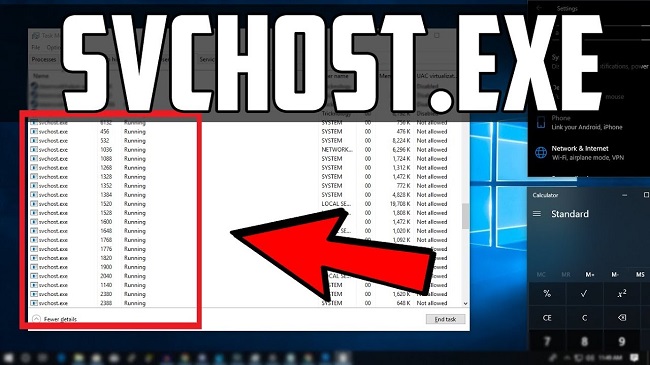Users who have seen “svchost.exe (LocalServiceAndNoImpersonation)” in the Task Manager and are wondering what it does and why it’s necessary have posed this question in large numbers. This piece will explain why this service exists and evaluate its security.
Contents
Exactly What Does “Svchost.exe(LocalServiceAndNoImpersonation)” Stand For?
When it comes to Microsoft’s operating systems, Windows 10 is the best of the bunch. It’s more efficient than its predecessors and has a tonne of extra features, but that’s not all.

These services are run in the background by Windows and are only visible in the in-depth edition of Task Manager. Certain tasks and Windows’ core operations run in the background thanks to services.
Typically, “svchost.exe” is the process Windows uses to quietly run services. All the time, many copies of “svchost.exe” are operating in the background. This is done on purpose so that if one service fails, the OS won’t crash along with it.
Svchost.exe is a generic host process name for services that run from dynamic-link libraries, according to Microsoft.
Users are often caught off guard by processes with names like “svchost.exe (LocalServiceAndNoImpersonation),” which is highly suspicious given that many viruses and other forms of malware are able to operate covertly by using slightly modified service names.
However, this task is located in System32 and is associated with the “Windows App Locker” programme.
Is There A Virus Called “SvcHost.Exe (LocalServiceAndNoImpersonation)”?
The titles of many malware programmes are slightly modified versions of legitimate Windows services. Launching a specific programme typically triggers the appearance of this service, which goes by a quite peculiar moniker.
It is completely secure, though, and has no known malware or virus connections. Therefore, as long as it is in the “System32” folder, it is advisable to let it run in the background.
In the Task Manager, you can “right-click” on the process and then pick “Open File Location” to get to the folder where it was initially created.
Where Can I Find Instructions on Disabling The Background Process Called “SvcHost.Exe (LocalServiceAndNoImpersonation)”?
Here, we’ll delete all settings for Windows App Locker’s parent application, “SvcHost.exe (LocalServiceAndNoImpersonation),” thereby ending the process’s background operation. Remember that this will undo any changes we made to the app locker settings. To achieve this goal:
Step 1: To access the Run dialogue, simply press the Windows key plus R.
Step 2: Simply input the following command and hit “enter” to execute.
secpol.msc
Step 3: Security Settings, followed by Application Control Policies, should both be double-clicked for their respective effects.
Step 4: Select “Clear Policy” from the context menu that appears when you right-click “AppLocker.”
Step 5: To permanently remove all restrictions, select “Yes” from the warning popup.
Step 6: Once you do this, Windows App Locker’s policy will be reset to its default state and it will no longer operate in the background.






























